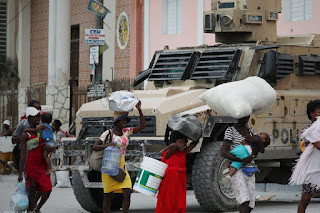The Harsh Truth Behind Mexico’s Record Migrant Detentions: What’s Driving the Crackdown?
A Surge in Migrant Detentions Signals a Policy Shift
Between October 1 and December 26, Mexican security forces detained over 475,000 migrants traveling irregularly toward the U.S. This unprecedented number reflects a marked shift in migration enforcement policies, a move largely attributed to political pressure from the United States. The massive scale of detentions underscores the complexity of bilateral relations between the two nations and highlights Mexico’s role as a gatekeeper for migrants attempting to reach the U.S. border. What stands out is the sheer efficiency and scale of the crackdown, implemented within just three months.
Trump’s Tariff Threats: A Catalyst for Action
The U.S. administration, under President-elect Donald Trump, has been vocal in demanding Mexico curb the flow of migrants. Trump’s threat to impose a 25% tariff on Mexican imports unless migration numbers were reduced proved to be a significant turning point. Mexican President Andrés Manuel López Obrador faced mounting pressure to appease the U.S. or risk a major economic fallout. This ultimatum forced Mexican authorities to implement stricter controls, including deploying security forces across migrant routes, particularly near the U.S.-Mexico border.
The Numbers Paint a Grim Picture
By mid-December, Mexico had detained close to 900,000 migrants in 2024, an astronomical figure compared to previous years. Foreign Minister Juan Ramon de la Fuente defended the policy, describing it as effective and adaptable, but human rights advocates have raised concerns over the humanitarian consequences. The data indicates that enforcement intensified as the year progressed, with December seeing one of the largest crackdowns, where over 5,200 migrants were detained in a single nationwide sweep. These figures reveal not just policy shifts but also the escalating human cost of migration.
The Impact of U.S. Pressure on Mexican Policy
Mexico’s intensified enforcement is not merely an independent policy choice but rather a direct response to external pressures. Trump’s rhetoric linked migration and drug smuggling, particularly fentanyl trafficking, making it a centerpiece of his negotiations with Mexico. The November phone call between Trump and Mexico City Mayor Claudia Sheinbaum reportedly cemented Mexico’s commitment to reducing migrant transit. This collaboration raises questions about Mexico’s autonomy in crafting its migration policies, as its actions increasingly appear dictated by U.S. interests.
A Regional Crisis with Global Implications
The crackdown on migration underscores the broader challenges facing Central and South America. Economic instability, violence, and climate change are forcing thousands to flee their home countries. Mexico, positioned as the final transit point, faces the difficult task of balancing U.S. demands with its own internal challenges. While the detentions may appease U.S. policymakers, they exacerbate humanitarian crises for the migrants themselves, many of whom are left stranded in Mexican detention facilities or deported back to dangerous environments.
Humanitarian Concerns and the Road Ahead
Critics argue that Mexico’s hardline stance prioritizes appeasing the U.S. over protecting human rights. Migrant advocates highlight the poor conditions in detention centers, where overcrowding and lack of resources are common complaints. The rising detentions also reflect a broader trend in global migration policies, where nations seek to externalize border enforcement to neighboring countries. As 2024 draws to a close, the question remains: can Mexico sustain this level of enforcement without addressing the root causes of migration, or will it face backlash both domestically and internationally?



Comments
Post a Comment